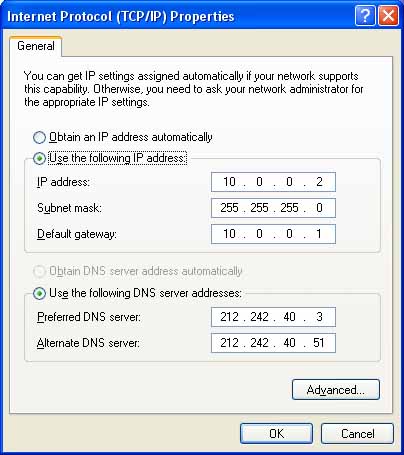

TechRadar Pro created this content as part of a paid partnership with ExpressVPN. Protect your online privacy with the best VPN services. What’s more, TCP/IP doesn't look like it'll be going away any time soon either. It's a reliable protocol, which works well out of the box and that is essentially is why it's been powering the web for decades.
#Learn tcp ip fast free
If you'd rather stay safe, feel free to leave TCP/IP alone altogether. Due to the possibility of this happening, it’s very prudent to make a note of any changes you make so you can restore them later. In fact, it's entirely possible your system will be slower post-tweaking than it was originally. If you want to try any of the options we’ve outlined here do beware, because TCP/IP optimization isn't easy. If it's disabled on your system, turn it on and while it won't work for everyone, this is still well worth a try.
#Learn tcp ip fast windows
So, for instance if you click the “Settings, Advanced” option, the program tweaks some important Windows TCP settings. The always-impressive ExpressVPN Windows app has an 'Optimize Windows networking to maximize VPN speed' option. Click Optimal and the program claims it can automatically find the best Windows TCP settings, applying them all with a simple click.Ī few apps have their own built-in technologies to ramp up your speeds too. SpeedGuide's freeware TCP Optimizer, as an example, looks scary, but don't let that put you off. If you're not quite so confident, there are freeware tools that can assist with the tweaking process and may well be able to help boost performance. So there are options available if you’re happy enough to carry out a little bit of tinkering.
#Learn tcp ip fast Pc
PC experts are frequently able to boost their operating speed by playing around with a Window Auto-Tuning feature, for instance. Operating systems have their own TCP speedups and settings too. To do this it’s worth checking your Settings box). If you're using a VPN app, for instance, switching from OpenVPN TCP to the simpler OpenVPN UDP protocol might improve speeds a little. In a few cases, that may prove to be an issue.

Incorporating TCP's many features brings some overhead to your data transfers though, slowing you down a little. Granted, you might have a wait a while if network conditions are really bad, but let's be fair. No matter how many packets you send, or how many different routes they take and, indeed, how many packets are lost, the protocol works hard to ensure your data gets there in the end. This extreme reliability is TCP's big advantage. One that happens, the process reassembles your packets, thereby ensuring they arrive in the order they were originally sent. This is smart enough to detect packet errors and asks for missing data to be sent again. When your packets reach the destination server, it receives them via IP then passes the data on to its own TCP layer. To do this, TCP divides up your data into packets, gives them a number, then sends them via IP to the destination computer. It can send streams of data and get acknowledgements from the destination device in real time. So, for instance, it works more like a phone call than the letter we used as an illustration above. TCP is, in essence a protocol, which uses IP to send its data, but adds in extra abilities to make sure the system works as you expect. This is obviously not great for a networking scenario, although fortunately, this isn't quite as bad as it sounds. Some letters might go by different routes, they may not arrive in the order you sent them, a few letters could be damaged along the way, or some may never arrive at all. The problem is that, just as in the real world, you've no control over how the letter is handled. In both cases, each letter takes a packet of data to the same address (the IP of your destination server) with the same return address (the IP of your device).

The protocol has two formats of IP address - IPv4 and IPv6 - but the basic operation is the same. You can think of it as similar to sending a letter. IP works by splitting your data into chunks called packets, then sending it to the destination. The IP part of TCP/IP handles the most fundamental task of getting your data to the source device, whether it's a website, a network printer, or maybe that Xbox in your kid's bedroom.


 0 kommentar(er)
0 kommentar(er)
